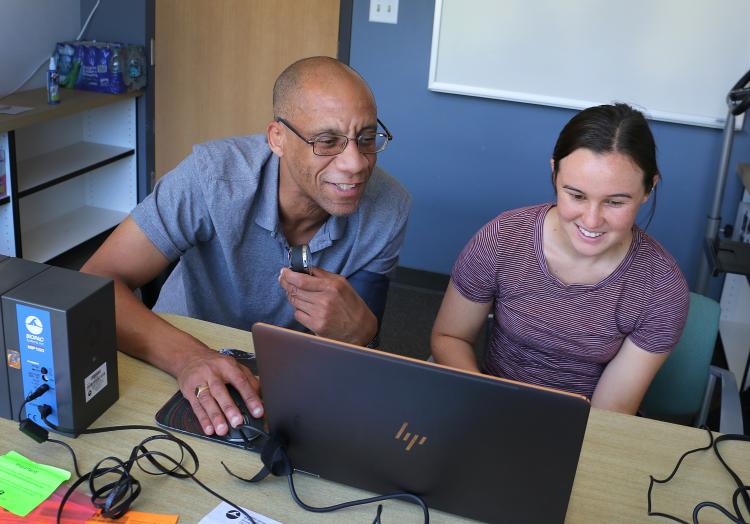When he began working on his dissertation, Michael Whitt had never heard the words “endothelial dysfunction.” But a chance meeting with a renowned cardiovascular expert would cause him to spend the next 20 years thinking about it.
“It’s the most significant predictor of a major adverse cardiovascular event,” said Whitt, who teaches in the biomedical engineering department.
Now Whitt and his company, Cordex Systems, hope to bring his device measuring endothelial dysfunction to the market after government testing occurs this summer.
“It’s going to help a lot of people,” Whitt said.
The origins for the device, trademarked as SmartCuff, date back to Whitt’s days as a bioengineering student at Rutgers. His graduate advisor had the initial concept for a device that would measure arterial compliance, or how much volume changes given a measured pressure.
“I took the concept and made it accurate,” Whitt said.
At the time, he didn’t consider any clinical use for it. But while Whitt was working at Eili Lily and Company, John Cooke, then the associate director of the Stanford Cardiovascular Institute, spoke at the pharmaceutical giant and asked Whitt about his dissertation.
“He said, ‘This isn’t just an engineering exercise,’” Whitt remembered. “’There’s no tool that measures endothelial dysfunction. This could do it.’”
That revelation would shift the focus of Whitt’s work. But pursuing the device would take time due to other career opportunities.
Five years after earning his doctorate in bioengineering, Whitt took a detour, pursuing a masters degree in business from UCLA – while commuting weekly from Indiana, where he simultaneously taught at Purdue.
“I flew to L.A. after I taught two courses on Thursday morning . . . and I flew back on the Saturday redeye or Sunday,” he said.
There he met Kathy Magliato, a heart surgeon, who was also pursuing an MBA. He and Magliato formed Cordex Systems in 2009 to develop the device. But then Whitt was hired to chair the engineering department at Miami Dade College in Florida, and after that, he was invited to teach statistics at the University of Notre Dame.
Now an assistant professor at Cal Poly, he and his partners are finally getting closer to bringing that device to the market.
Cordex investors have raised $5 million. Meanwhile, Cordex is currently preparing for FDA submission while also exploring the use of the device as a companion diagnostic for a pharmaceutical company, which would use the device to assess the effectiveness of their drugs.
Once approved, Whitt said, the device would be easy to use.
“It’s a blood pressure cuff,” he said. “You put it on your arm and press a button.”
While easily applied, the device could have a significant impact. Heart disease is the leading cause of death worldwide. And while often treatable, symptoms are frequently undetected. Cardiovascular disease is especially threatening to women, accounting for 1 in 3 deaths each year and one fatality every 80 seconds, according to the American Heart Association.
“It is both humbling and tragic that in the time it takes me to compose this note of gratitude, at least twenty women will die of cardiovascular disease in the US – a disease that is 80-90% preventable,” Magliato told PRWeb. “It is this singular fact that drives us at Cordex to create technology to address the health needs of women and men with a device to detect the earliest signs of heart disease.”
Despite the long journey, Whitt said, the prospect of saving lives has been motivating.
“That’s what kept me going,” he said.

Whitt comes from a line of problem solvers. His father was a physicist, and his maternal grandfather, the first African-American supervisor with the Springfield, IL, police, became chief of detectives there.
The puzzle Whitt stumbled on to, meanwhile, provides a healthy lesson for students.
“I tell them not to minimize what they have to contribute,” he said. “Sometimes people don’t know what they have.”


